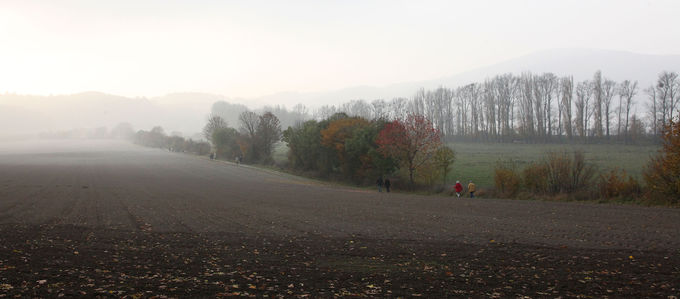
The month of November in the northern hemisphere is cold and dark. There is an autumn mood, the leaves are falling, and the nights are long. It is the month of the more quiet church festivals. nac.today takes a closer look.
This year the Day of Prayer and Repentance falls on November 18th. The idea to set aside a day in the year for repentance is very old yet highly topical. But, honestly, who wants to do penance and what for anyway? Already the word “penance” does not bode well. It suggests sorrow, sin, mourning, ashes, and asceticism. Already in the Old Testament the people observed days of repentance and fasted. This was the case, for example, at the time of the prophet Jonah. After his initial hesitation, he went to the city of Nineveh and proclaimed God’s message to the people. They believed, proclaimed a fast, and put on sackcloth. Even the king put aside his robe and covered himself in sackcloth and sat in ashes. This ritual of doing penitence has become the proverbial. At the time the people’s penitence had an effect: God relented from doing what He said He would and forgave the people.
Fasting periods
Already the Roman calendar called for the observance of so-called atonement days in times of war and other emergencies. They were to appease the gods. In the Catholic Church during the Middle Ages, Wednesday and Friday came to be established as days on which the fast were observed—and are still observed in some regions to this day. Wednesday marked the day on which the Lord was betrayed by Judas; whereas Friday was the day of the crucifixion of Jesus. It was from the observance of these days that a period of fasting was established just before the celebration of the great Church festivals: the Advent season and the time of Lent just before Easter. These weeks are characterized by penitence and inner reflection.
Days of Prayer and Repentance originally were of a public nature. In the face of hardship and need, the whole population was called on to do penitence and to pray. During the Reformation, and in response to the Turkish threat, the first Protestant Day of Prayer and Repentance was decreed in 1532 in the city of Strasbourg. Many states and regions observed their own Day of Prayer and Repentance in the seventeenth century: the Thirty Years’ War in Central Europe offered reason enough for many a day of penitence.
During the Age of Enlightenment such repentance days lost in significance. However, other Church festivals began to be observed. In 1816, for example, Frederick William III of Prussia decreed that all Lutheran churches in those areas under Prussian rule observe the last Sunday before Advent as a day to remember those who had been killed in wars. Only in 1893 the evangelical state churches in Germany finally came to agree upon a uniform date for the Day of Prayer and Repentance: the Wednesday preceding the last Sunday after Trinity Sunday (the last Sunday of the church year).
All Saints’ Day and other Christian holidays
All Saints’ Day (Festum Omnium Sanctorum) is celebrated on 1 November. Many Christian churches, initially the Catholic Church and later also the Protestant Church, honour and remember the departed faithful who lived a particularly devout life and thus left an example for a courageous faith. In Belgium, in parts of Germany and Switzerland, in France, Italy, Croatia, Liechtenstein, Lithuania, Luxembourg, Austria, Poland, Portugal, Slovakia, Slovenia, Spain, Hungary, and even in the Philippines, All Saints’ Day is a public holiday. The same applies to Finland and Sweden, although here it is observed on the Saturday before the first Sunday in November.
Remembrance Day in the Commonwealth countries and in Germany (where it is called Volkstrauertag), Día de Muertos (“Day of the Dead”) in Mexico, and a day in the European Union commemorating those who died in the line of duty during the two World Wars are a few more memorial days that are observed in November.
Photo: Oliver Rütten




